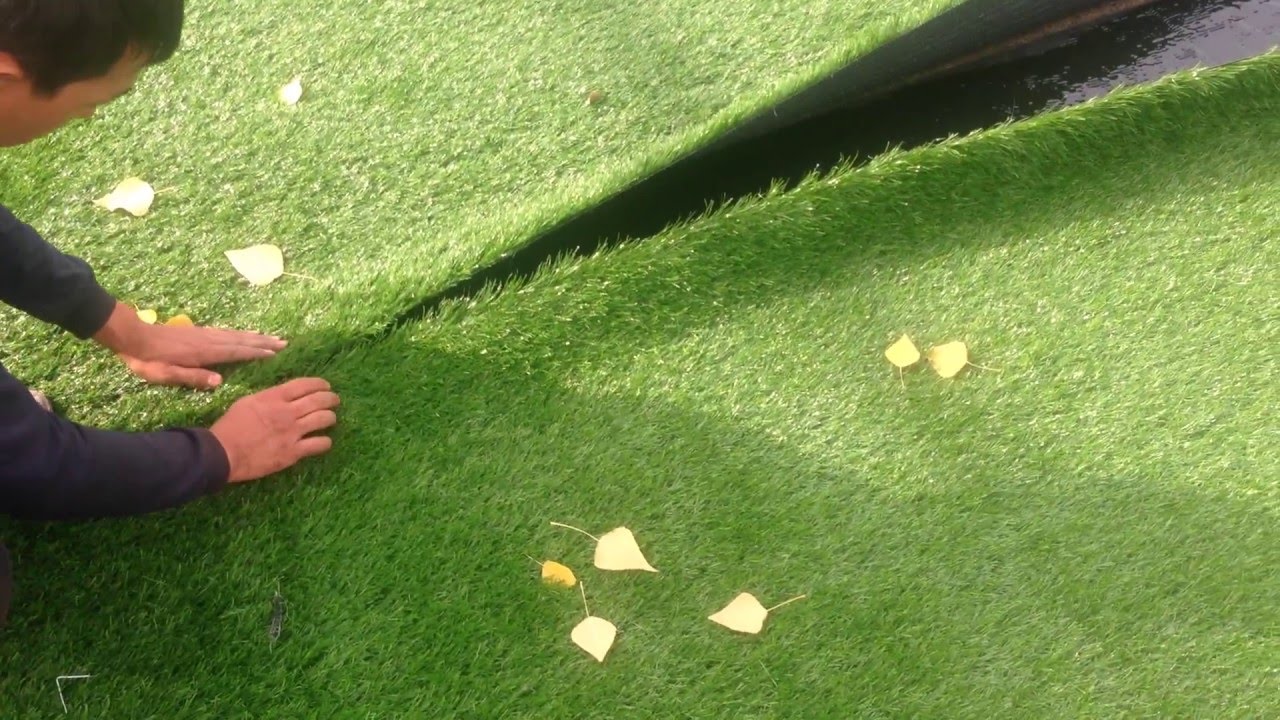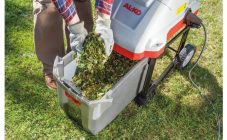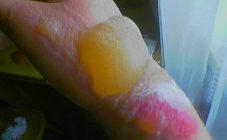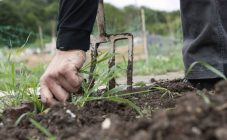Content:
We can talk about the benefits, beauty and effectiveness of artificial turf for a very long time. Now it has become a convenient way to decorate the area before the conference, to make the surface around the pool, on the playground, football field, and so on more comfortable and pleasant.
Some summer residents are faced with the problem of the lack of conditions for the natural growth of conventional ornamental plants, and then laying artificial grass becomes a salvation. Indeed, with the help of simple technology, even the most hopeless land can come to life.
You can carry out the coating both with your own hands and order a service from the masters who, as soon as possible, are able to prepare, lay, glue and, in general, perform all the necessary work.
The structure and types of artificial turf
Covering grass comes in rolls to make installation even easier. For its construction, the principle was taken, as in the natural prototype. That is, the material is specially designed to maintain elasticity and not deform under the influence of weather conditions.
Polyethylene and polypropylene extruders extrude fibers that end up looking like stems. Then this pile fiber is attached to the base. Moreover, it can be of different thickness, length, density, and so on.
Grass is usually produced in sizes from 6 mm to 10 cm. At first glance, the coating seems to be the same for many manufacturers, but still each brand has its own device.
The general classification of artificial lawns is carried out according to the laying principle.
Unfilled lawns
Aesthetically, this type of artificial grass is considered the most beautiful and as close as possible to the natural prototype.
They try not to move on such a coating so as not to spoil the appearance, and are used for decorative purposes.
Distinctive advantages over other types - does not require sprinkling with quartz sand.
Semi-covered lawns
They can be seen most often on sports fields, playgrounds and summer cottages, since they are the most optimal option for such conditions.
Its soft polyethylene fiber is able to cushion bruises from a fall. When laying such a lawn, it is important to consider one point: for the strength and reliability of a semi-filled lawn, quartz sand is needed. It is he who falls asleep in the intervals among the fibers.
Backfill lawns
It is a separate special kind that is perfect to be laid on football fields.
In it, rubber granulate is combined with quartz sand and, thanks to this, has excellent spring properties. Such a coating has saved more than one athlete from getting serious injuries.
How to install artificial turf on a soccer field
For football, as a rule, a backfill lawn is used, the pile of which is from 2 to 5 cm.
Instructions on how to lay such a lawn:
- Correct installation begins already from the moment the material is unloaded, because the better the materials are preserved during work, the longer the field will last. Rolls of synthetic flooring must be unloaded as carefully as possible. Many people use a forklift truck with a pin 10 cm in diameter and 3 m long for this, if possible.
- Artificial grass can be laid on a solid base, and on a sandy-gravel base. The main thing here is that there should be any elastic and durable substrate, not less than 0.8-1 cm in thickness. If you take some thinner material, then putting the coating evenly will not work, and bends cannot be avoided either. After preparation of the substrate, the process of rolling the rolls begins. The process should take place in strict accordance with the field scheme. When the rolling is over, the grass is left to lie down for at least 10 hours so that the lawn is completely straightened out and the tension from the previous form in which the material was stored is removed.
- The sheets of fleecy cover are laid 15 mm overlap, after which they are trimmed so that the rolls dock millimeter by millimeter.
- Only after it has been possible to achieve an even and precise fit at the joints of the rolls can we proceed to gluing different parts. For this it is important not to forget to trim the edges. Then unscrew the edges on each canvas and lay the connecting tape (the joint of the canvases should fall in the middle of such a tape). Then you need to apply a two-component adhesive with a spatula. After this procedure, the edges of the canvases are gently lowered. Until the glue completely hardens, you will have to lift all the villi that are accidentally bent inward. Each seam is rolled with a roller.
- In some cases, marking lines are not sewn into all fields, and then it must be sewn, but only after the grass cover is completely glued. Sewing requires strips and a special double-bladed tool. This tool is necessary in order to make a place for the markings, apply glue, and then carefully insert the tapes.
- Another step is sanding the lawn. Calcined quartz sand is used (most used with a fraction of 0.3-0.6 mm). They are dumped in dry weather. You can do it yourself, using ordinary tools. In accordance with the consumption rate per 1 sq. m. sand is equally distributed throughout the lawn, and then it is combed and given time to settle.
- The final step when laying artificial turf on a soccer field is to add extra rubber granules and then re-comb the turf. It is better that the granules of rubber or rubber have a fraction of 1-3 mm. After about 4-6 months of using the field, you will have to repeat the filling with granules.
How to lay artificial grass on concrete
Laying on concrete is most of all practiced in separate areas for the purpose of landscaping the massif, on open terraces and even balconies. With such a covering, you also cannot do without a substrate, so that the grass cover does not quickly wear off on the base.
The stores offer a variety of thin coatings made of porous rubber or special geotextiles.
Fastening of an artificial turf to concrete is carried out using the following technology, similar to the mechanism of covering a football field:
- Initially, the surface is rid of all kinds of debris.
- Artificial turf is carefully rolled out with an overlap of 15 mm on top of each other and left for a while to straighten everything.
- The sheets used to cover are trimmed evenly at the seam line, so that the edges fit snugly together.
- Then they are glued with tape and glue. The order is the same as in the previous case - the tape is positioned so that the joint passes through its middle, and glue is applied on top.
How to lay artificial turf in the country
In summer cottages, laying a lawn is a particularly painstaking process. This is due to the preliminary preparation of the soil. Also in such conditions it becomes more difficult to calculate the required shape and number of rolls.
Everything happens as follows:
- The base is being prepared. That is, the land is cleared of all weeds and debris. If there is such a possibility, then it should be leveled, however, this is not always the case. It is also important to keep the soil dry and clean. If there is sand in the yard, then it is better not to put the lawn on it, since there is a high risk of deformation.
- To prevent water from accumulating under the artificial carpet, it is necessary to additionally drain the liquid from the surface. Usually, manufacturers take this into account when making a lawn, but in summer cottages one cannot do without an additional drainage layer. It is made from fine screening or crushed stone.
- After the surface and the drainage layer are prepared, begin to roll out the rolls and lay the carpets jointly. When they are rolled out, they must be left for at least a day to straighten and take a new shape. Uneven edges of the rolls must be trimmed.
- Lying grass carpets are fixed with fastening materials.
- Unlike previous lawn laying techniques, it is highly recommended to secure the edges with a mounting stapler.
What you need to know about the rules for operating artificial turf
Artificial turf must be washed and cleaned up, especially when it comes to playgrounds.
The layers of granulate, sand, crushed stone and so on need to be renewed from time to time. On average, the procedure is repeated once every six months. More updates are made only when the lawn is used too often (for example, a football field).
It is important to constantly monitor the condition of the grass, check the seams, and whether there are any discharge.
In summer cottages, weeds should not be allowed to germinate on the cover. As soon as they become noticed, they are removed along with the root, but very carefully.
Artificial turf is an invention that has become a great alternative to natural grass. Only artificial turf is easier to maintain, unable to fade or overgrow. It is worth once to refine the site with them, and the result will delight for many years.
















